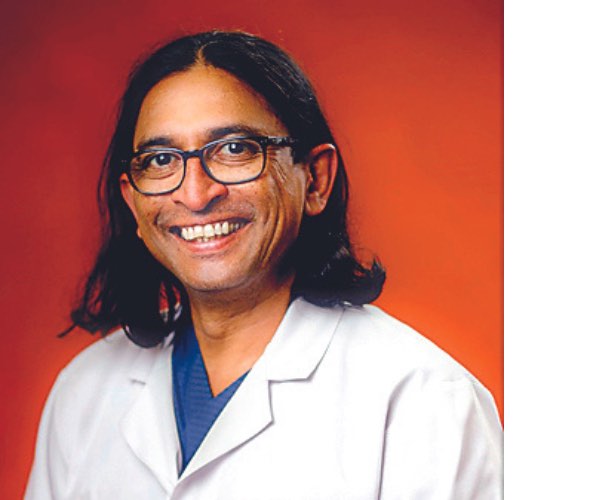
Jul 23 2023.
views 357Dentistry is a very interesting subspecialty of Medicine. This sub speciality was derived when the physicians realised that the issues arising from oral tissues were many, very specific, and needed specialised training.
The mouth has soft and hard tissues, has an immense amount of microbiota(bugs) and is in an area of multiple vital structures and neurological and vascular complexity. Hence it has been proven that any pathology in the Oro-facial tissues should be identified and treated like any other condition, to avoid complications. Infections from the mouth can affect other organs of the body aided by the blood circulatory mechanism.
Other than the sociological factors, a healthy mouth indicates a healthy person. Many systemic diseases too can be identified by looking at the oral tissues. For example Iron deficiency. In iron deficiency anaemia, patients experience many oral symptoms. The oral symptoms can be burning sensation in the lining of the mouth, inflamed purplish veins on the underside of the tongue, dry mouth, inflamed swollen tissues and sores and an abnormally smooth tongue.
Another area of concern should be malignancies. In Sri Lanka, cancers of the lip, oral cavity and pharynx are the most common cancers among males and ranks ninth among women, reported to account for 9.7% of total malignancies in the country (1) The incidence of cancers of the lip, oral cavity and pharynx in Sri Lanka, standardised to the world standard population, in the year 2012, was 16.6 per 100,000 and 3.6 per 100,000 in males and females respectively1 . In Sri Lanka, it is estimated that around 3 oral cancer related deaths occur every day (1).
Very important area of dentistry is identifying sexually transmitted diseases. Some conditions such as AIDS, Syphilis and Herpes do represent clinically in the mouth. These lesions should be identified and treated immediately, or directed to the relevant specialities of medicine. However most dentistry is about teeth and gums! And more recently LOOKS!
Prevention of oral disease
Ideally dentistry should prevent disease rather than fixing when pathology and breakage sets in. Preventative methods are to control the bacterial flora which causes dental caries and periodontal disease. Other preventative methods are diet orientated. When fluoride levels are correct, teeth seem to evolve stronger and resistant to bacterial attack. Less sugar causes less caries. A balanced diet is always a healthy way to go about. Regular brushing and flossing of teeth maintain teeth in a good shape. Interdental brushes too can help to improve oral health.
Ideally a healthy mouth does not bleed. If oral hygiene regimes do not help, then consultation with a dentist is recommended. Patients should also remember painkillers and antibiotics mostly take symptoms away but not the cause. So it is prudent to seek professional help if there is prolonged discomfort or pain in your mouth and surrounding tissues.
The person who is sacred to visit the dentist
There are sedative and anaesthetic methods to help persons (Children and Adults) who are scared to visit the dentist. Midazolam is a drug which can induce sedation and the medication is given orally or IV (intravenously) to sedate the patient to carry out routine dental treatments. When longer more demanding procedures are warranted, then a general anasësthesia can be arranged. So, actually patients should not worry about pain and discomfort in modern day dentistry.
Sedation and anaesthesia induces amnesia in the patient, so that any psychological trauma to the patient is avoided. This may be the best benefit from sedation.
Modern Dentistry
Modern dentistry includes an arsenal of tools and methods to replace lost tissues. Dental implants have been in the market for a long time and today there are clinically predictable results. When bone or soft tissue is lost due to pathology or trauma, the dentist can use guided tissue regenerative methods to regenerate lost tissues (GTR/GBR).
Botox is used to relax the masticatory muscles in hyperactive situations.
Human Growth Factor applications as well as stem cells are used to regenerate the oro-facial tissues.
Dentistry today is taking a rapid digital transformation. Digital Radiography, MRI scanning, digital 3D scanning are done routinely in the modern dental practice.
Invisible aligners (invisible Orthodontics) for treatment of malaligned teeth have become very common today. These are AI generated solutions and the technology has really leaped forward in the recent years.
Photo dynamic laser disinfection is also a tool the dentist has today. Here specific microbes can be targeted by laser beams and destroy the pathogens.
Future of Dentistry
There is a race in genetic research to produce teeth on demand. Although scientists have successfully produced teeth by embedding tooth germs in animals, human applications are not yet available to the clinician yet. If successful, this will be a very good solution for treatment of lost teeth.
References (1) National Cancer Control Programme. National Cancer Incidence and Mortality Data: 2012. National Cancer Control Programme, Ministry of Health and Indigenous Medical Services; 2020. Available from: https://www.nccp.health.gov.lk

1 Comments
Hasanbava Samsudeen says:
Jul 27, 2023 at 10:13 pmVery good information imparted!